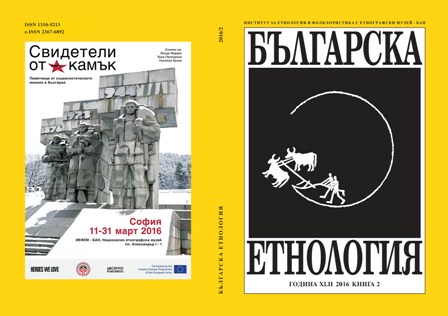
We kindly inform you that, as long as the subject affiliation of our 300.000+ articles is in progress, you might get unsufficient or no results on your third level or second level search. In this case, please broaden your search criteria.

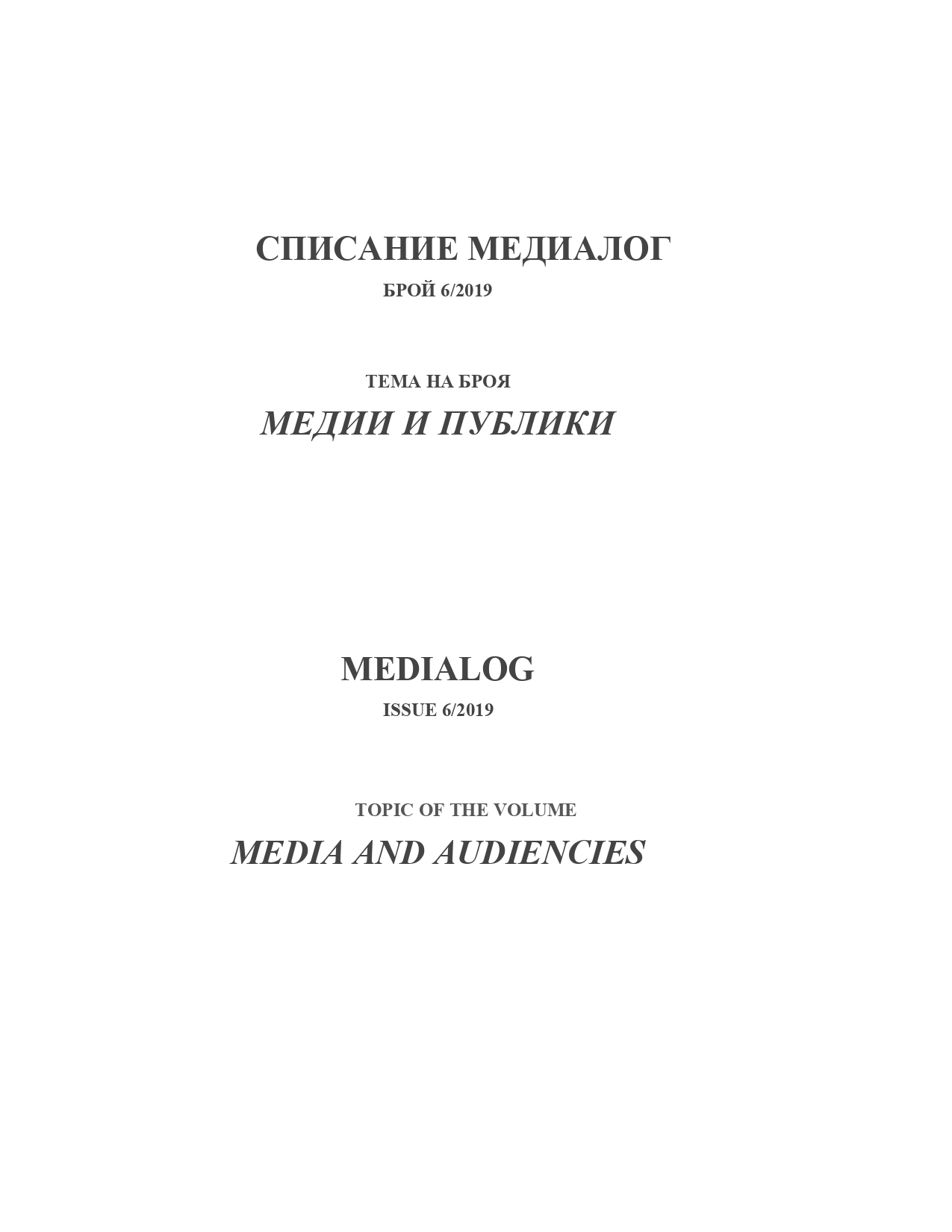
Conference report on the International Science Conference ‘Culture as Fieldwork: Authentic, Spectacular, (In)visible'
More...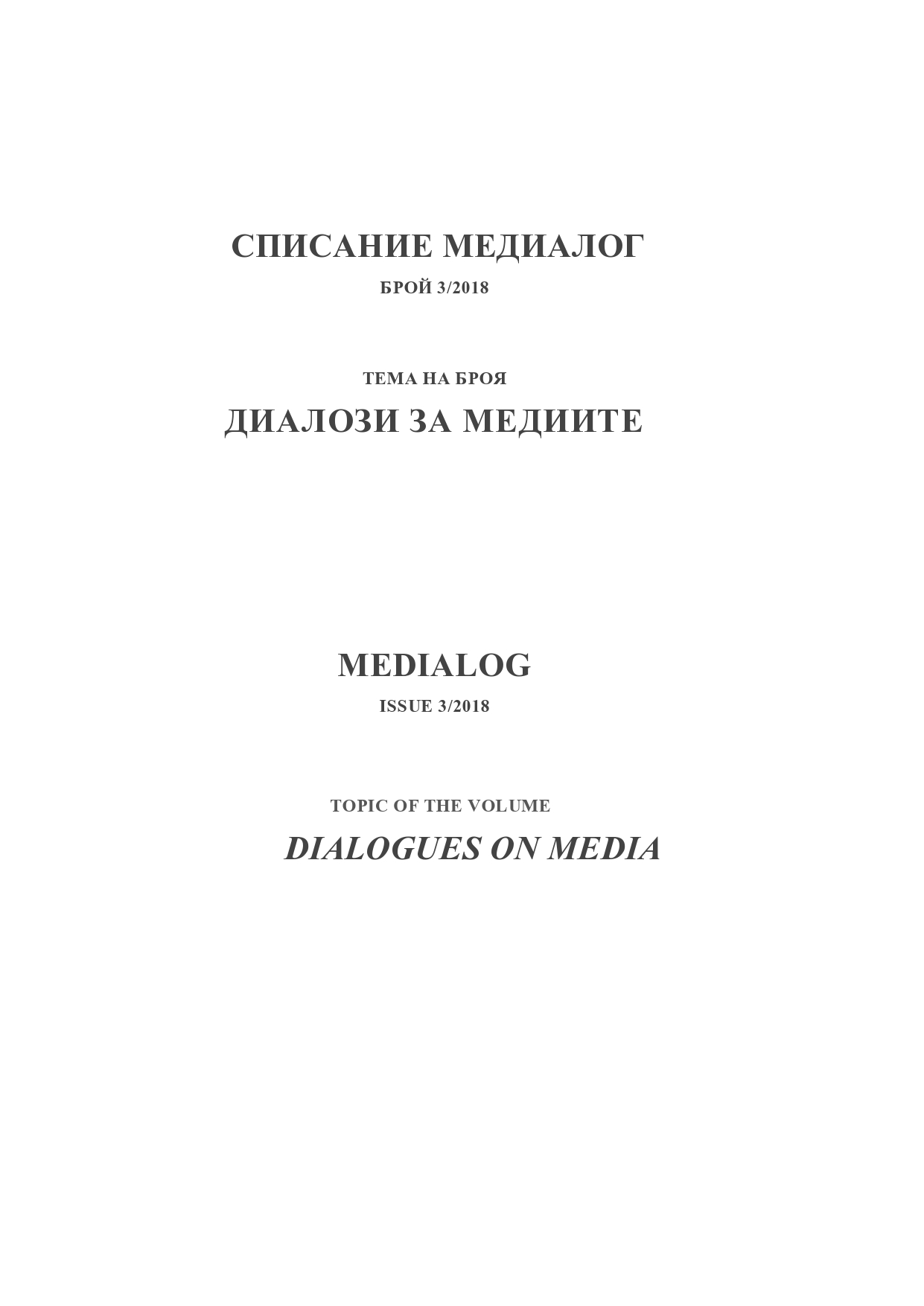
The text presents the state of the web TV in Bulgarian based on the results from the project ‘Web radio and TV in Bulgarian language’ funded by the Research fund of Sofia University with supervisor prof. DSc Snezhana Popova.It is hard to show precise data about the number of web TVs in Bulgarian or with Bulgarian addresses in 2017. The platforms do not use the term web TV, ‘online TV’. In 2017 three types of web TVs prove to be sustainable: regional, lifestyle and radio and TV. The announcement style TVs that present service information as well as the only regional station ‘Epohi’ TV have disappeared. The sports TV projects do not function (with the exception of the TV of FC ‘Levski 1914’). At least formally the ‘music online TVs’ are the largest number. However, the research showed that behind this title on some of the platforms exist websites with pornographic content. Most of them are announced as pop-folk music TVs. The main problem in making web TVs in Bulgarian is the ambiguity of who is expected to watch them. Apart from regional TVs everyone else say they a looking for their audience instead of building a message for a specific group.The text presents the state of the web TV in Bulgarian based on the results from the project ‘Web radio and TV in Bulgarian language’ funded by the Research fund of Sofia University with supervisor prof. DSc Snezhana Popova.It is hard to show precise data about the number of web TVs in Bulgarian or with Bulgarian addresses in 2017. The platforms do not use the term web TV, ‘online TV’. In 2017 three types of web TVs prove to be sustainable: regional, lifestyle and radio and TV. The announcement style TVs that present service information as well as the only regional station ‘Epohi’ TV have disappeared. The sports TV projects do not function (with the exception of the TV of FC ‘Levski 1914’). At least formally the ‘music online TVs’ are the largest number. However, the research showed that behind this title on some of the platforms exist websites with pornographic content. Most of them are announced as pop-folk music TVs. The main problem in making web TVs in Bulgarian is the ambiguity of who is expected to watch them. Apart from regional TVs everyone else say they a looking for their audience instead of building a message for a specific group.
More...
In 2018/2019 the Radio and Television Department stated the Master’s program Digital Media and Video Games in the Faculty of Journalism and Mass Communications of SU St. Kliment Ohridski. The program is developed together with leading companies on the video games market.
More...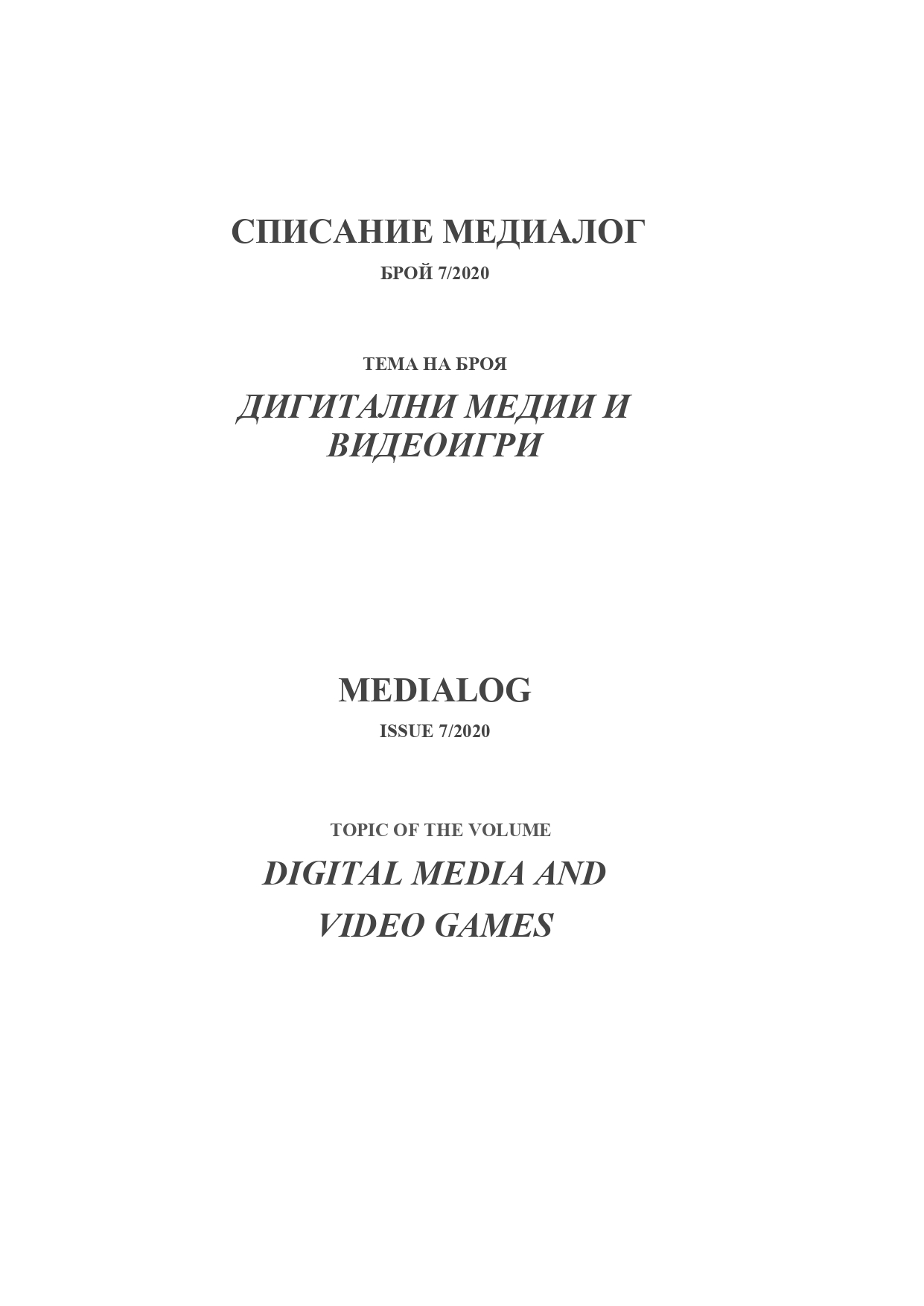
The system of protection of copyrights and related rights within the European Union is rapidly developing with putting forward of new assessment rules to protected content in digital environment. Changes occurred at the Directive (EU) 2019/790 of the EP and of the Council of 17 April 2019 refer to establishing of a brand-new retated right of the press publications publishers concerning digital issues, and also to harmonized legal protection for the press publications when used online by information society services providers. There appears necessity of licensing of the online use of publications of new providers, such as news aggregators and media clipping services.
More...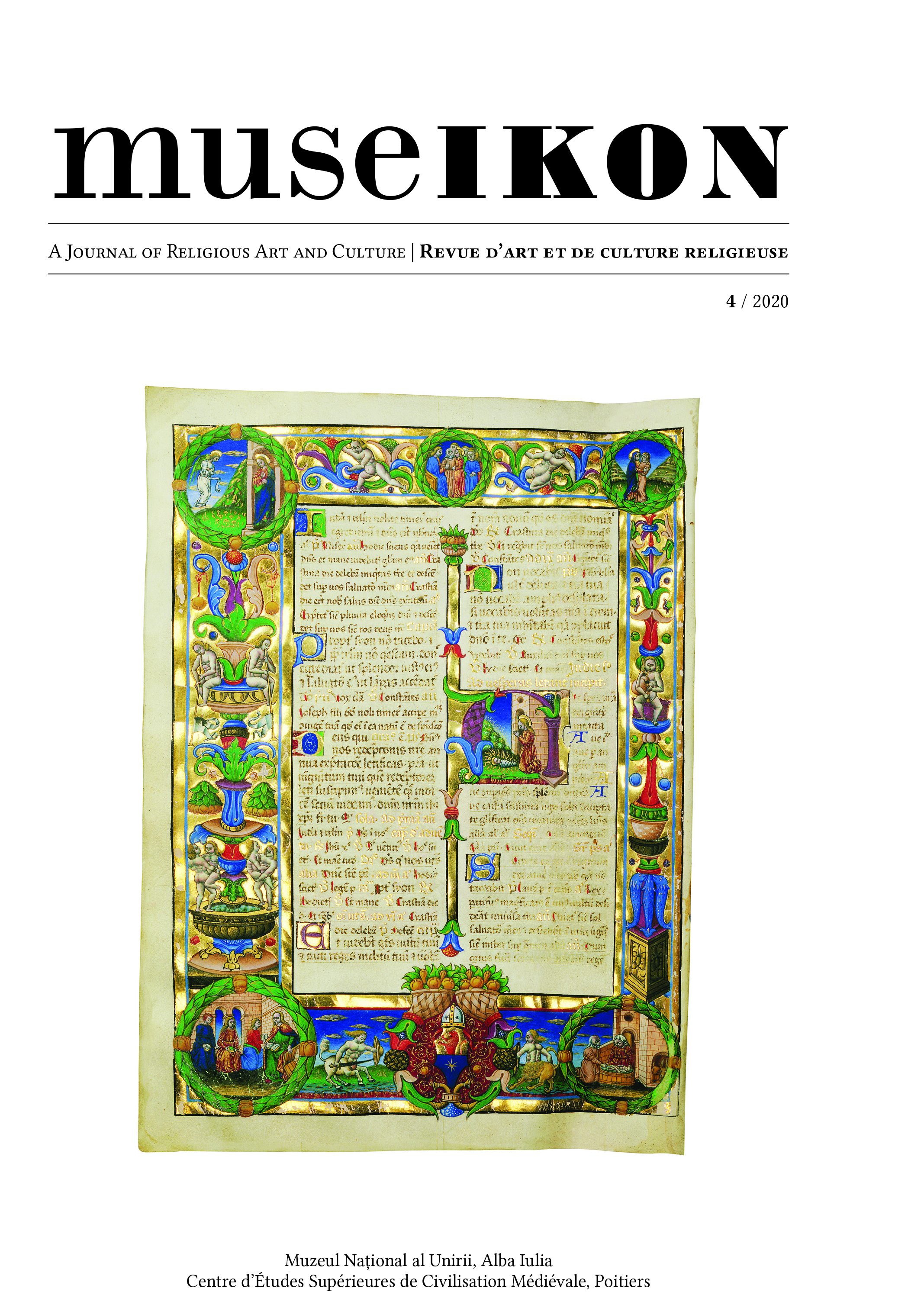
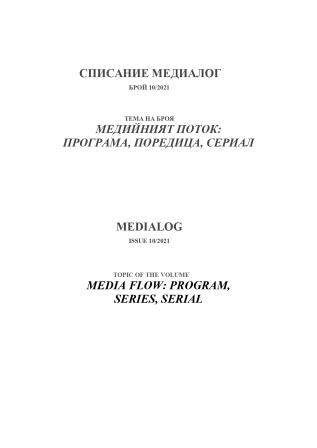
The dual broadcasting system in the six Western Balkan countries puts challenges but also creates opportunities to increase the diversity of the TV program. The paper aims to answer the question whether there is a variety of television content provided by the public broadcasters to the audiences in the Western Balkans. Their public mission obliges them to provide access to programs on diverse topics for all target audiences, including ethnic minorities and people with disabilities.
More...
The study presents the contributions of Raina Katsarova (1901-1984) - one of the pioneers in establishing the Bulgarian traditional music in the first specializated music programs on Rodno Radio and Radio Sofia. It presents a researcher with experience in field work and thousands of recordings of traditional music, with publications of song collections and academic works, but also a citizen, cultural figure, public activist, media figure. The activities of Raina Katsarova as an educator, music journalist and media critic are discussed; her talks and song tales on the radio; her activities in defense of faith and rituals in the media of totalitarian Bulgaria; her role in publicizing Bulgarian traditional music on air around the world as an ambassador of Bulgarian culture, folklore and science. It is concluded that the traces of her activity in the media cover the history of Bulgarian radio, understood in the middle of the twentieth century as a public good and cultural force. It is clear to everyone that music on the radio matters. Raina Katsarova's radio appearances show how ethnomusicology is also important in and for radio.
More...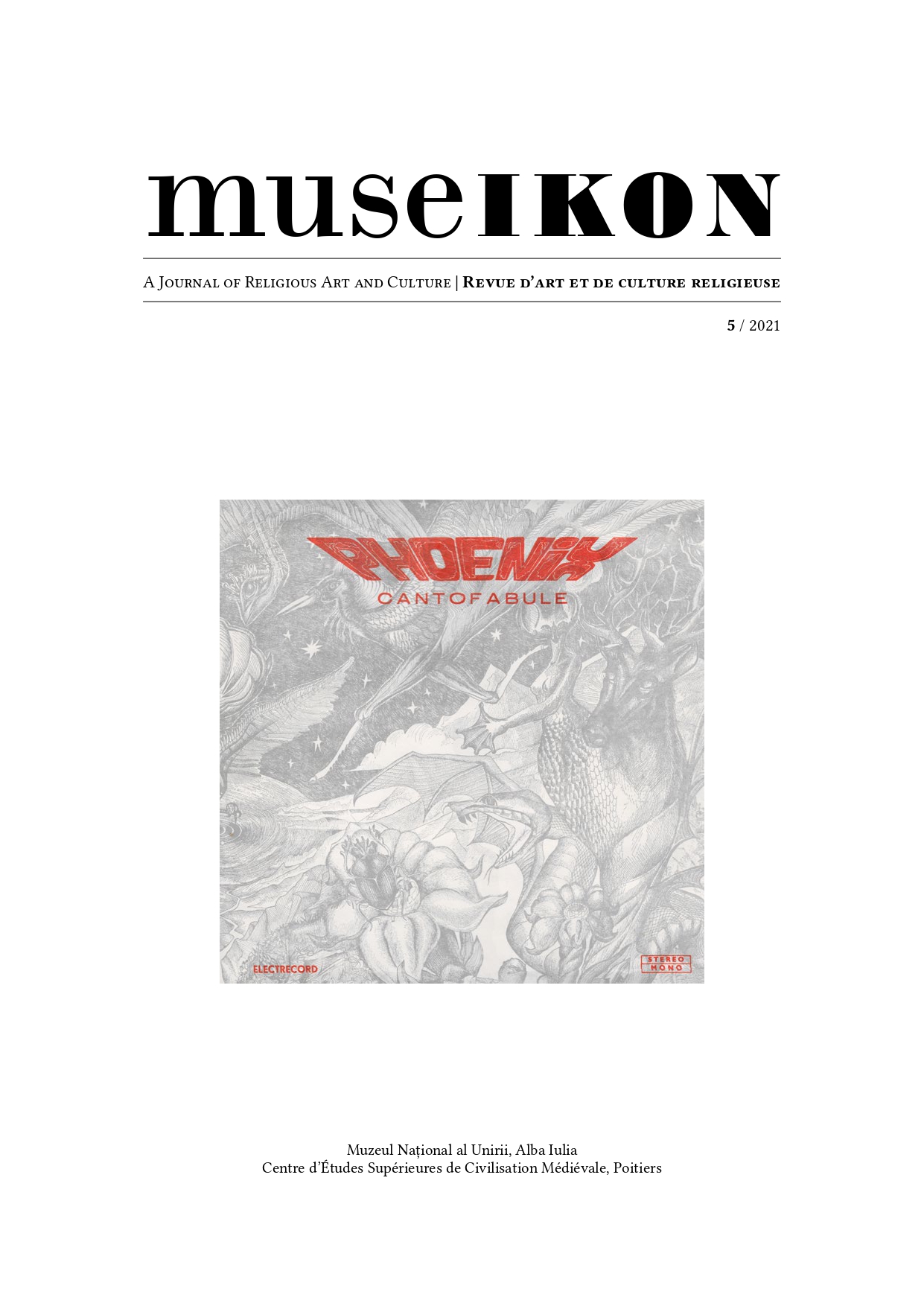
Philologists and medievalists rarely deal with the subject of contemporary Pop-Rock or Folk music. When they do it, they usually fall prey to a certain form of medievalism. The current section of Museikon follows a completely different approach. The pairing of interviews with memoirs and the introduction shaped in the form of an actual scientific study have the sole purpose of launching an experiment in the history of culture. The case study is a 1976 album of the Romanian Rock group Phoenix. The state owned record company Electrecord made a mistake, releasing it as Cantofabule, even though its correct title was Cantafabule or Bestiar. It had traditional- and medieval inspired lyrics, but most of all, it was the result of artistic synergy. A collective work of sorts, much in the manner of the medieval manuscripts of old.
More...
Born in 1951 in Timișoara, Elisabeth Ochsenfeld lives today between Heidelberg (de), Frankfurt am Main (de) and Wolfsberg / Gărâna (ro). She graduated the Faculty of Fine Arts, University of Timișoara, in the class of Professor Leon Vreme (1973); she directed the Art Group—Studio 35 in Timișoara(1974-1980) and has had, from 1973 to date, several exhibitions of painting, drawing, mixed media, photography, and illustrations, being also the curator of a large number of exhibitions and artistic events. In 1975 she finalized the drawings for the cover of the double LP Phoenix Cantafabule based on an idea of Valeriu Sepi. She immigrated to Germany in 1986 and soon thereafter became a graphic artist for the project Rock Carvings and Inscriptions along the Karakorum Highway at the Heidelberg Academy of Sciences and Humanities (1987-2012). Her works are displayed in galleries, museums and private collections across Germany, Romania, England, the Netherlands, France, Italy, Austria, Ukraine, Hungary, Belgium, Israel, Greece, Sweden, Pakistan, Finland, South Korea, the USA, and Canada. She is the founder of Arthouse Wolfsberg / Gărâna and a member of the Association of Professional Artists in Germany, the International Women’s Cultural Federation, Freeinterartists, and Contemporanii.
More...
Andrei Ujică est né à Timişoara en 1951. Il a étudié les lettres modernes à l’Université de Timişoara avant de poursuivre ses études à Bucarest puis à Heidelberg. Depuis 1968, il publiedes textes en prose. Il a été impliqué dans la création desdeux lp du groupe Phoenix – Mugur de fluier (‘Bourgeon deflûte’, 1974) et Cantafabule (‘Chantefables’, 1976). En 1981, ila immigré en Allemagne. À partir de 1990, il s’oriente vers lecinéma et codirige avec Harun Farocki Videogramme einer Revolution (‘Vidéogrammes d’une révolution’, 1992) et Kameraund Wirklichkeit (‘Caméra et réalité’, 1992) – deux filmssur la révolution roumaine de 1989. Out of the Present (1995) raconte l’histoire du cosmonaute Sergueï Krikalev, qui apassé dix mois à bord de la station spatiale Mir, alors que surterre, l’Union soviétique cessait d’exister. Suivent le court métrage2 Pasolini (2000) et le long métrage Unknown Quantity(2005). Depuis 2001, il est professeur à l’Université de Karlsruhe.Il a fondé le ZKM (Zentrum für Kunst und Medien) Filminstitut.‘L’Autobiographie de Nicolae Ceauşescu’ (2010), présentéeen sélection officielle à Cannes, est un long métrage demontage où les images d’archive sont présentées selon la perspective du dictateur. Actuellement, il prépare un film partiellementbasé sur des images d’archive et consacré auxévénements des 15 août 1965, date du célèbre concert des Beatles sur Shea Stadium à New York
More...
Né à Turnu-Severin (Roumanie) en 1942, fils de Nicolae Foarță, médecin, et de Yvonne Foarță, née Burger, professeure de musique, Șerban Foarță a fait ses études à la Faculté de Philologie de l’Université de Timișoara (1960-1965), spécialisation roumain-allemand. En 1978, il a soutenu sa thèse de doctorat en littérature dans le cadre de la même université, thèse publiée deux années plus tard : Eseu asupra poeziei lui Ion Barbu [‘Essai sur la poésie d’Ion Barbu’], Timișoara, éditions Facla, 1980. Il a été professeur à la Faculté des Lettres de l’Université de l’Ouest,à Timișoara, de 1992 à 2005. Membre de l’Union des Écrivains de Roumanie, Șerban Foarță est premièrement poète, essayiste, prosateur et critique littéraire. Il est trèsconnu pour sa poésie qui, lui a valu non seulement desprix littéraires mais surtout une large reconnaissance auprès de ses lecteurs: Simpleroze (Timișoara, éditions Facla,1978); Șalul, eșarpele Isadorei / Șalul e șarpele Isadorei (Bucarest,éditions Litera, 1978); Holorime (Bucarest, éditionsLitera, 1986) et nombre d’autres volumes après 1989. Il atraduit en vers les livres poétiques de la Bible (Hexachordos: Psalmii. Ecleziastul. Cantarea Cantarilor. Iov. Psalmii lui Solomon. Odele, pre stihuri retocmite; Timișoara, éditions Brumar, 2011). Il a traduit des poèmes de la littérature française médiévale, y compris les fatrasies de Philippede Beaumanoir (dans la plaquette 33 de fatrazii, Bucarest,éditions Art, 2008). Cependant son début en tantque poète, avant la publication de la première plaquette (Texte pentru Phoenix, Bucarest, éditions Litera, 1976) s’est fait dans deux LP. Ses vers ont été enregistrés par Phoenix en 1974 (Mugur de Fluier) et 1976 (Cantafabule).
More...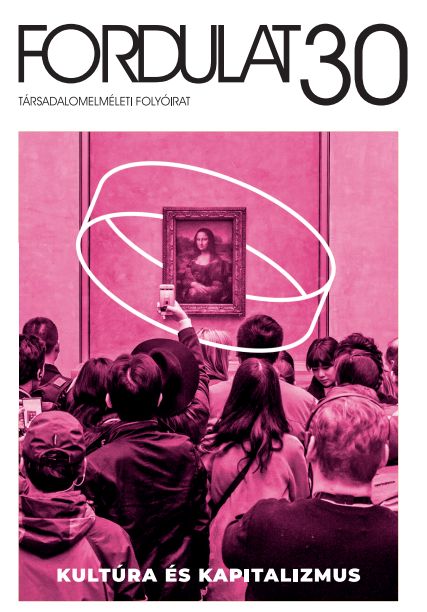
Our study demonstrates that the analysis of culture should be embedded into the history of capitalism. Through this understanding of culture's materiality, we highlight that culture is not only a spiritual but also a materially embedded phenomenon. We argue that this analysis is also essential to outline culture's role in a post-capitalist world.Our study offers four perspectives to analyze the diverse, often indirect, relationship between culture and capitalism. We show how the diversity of culture is more than heterogeneity but rather part of class conflicts and struggles. By examining the cultural institutions, our paper points out that they play a crucial role in the reproduction of the laborforce. It also points out that global and nation-state-led cultural production are not contradictory but entangled phenomena. Finally, our paper emphasizes that the relationship between culture and capitalism cannot be understood as abstract laws but must also always consider the social trajectories of professional cultural producers, who are a central but often invisible dark matter.
More...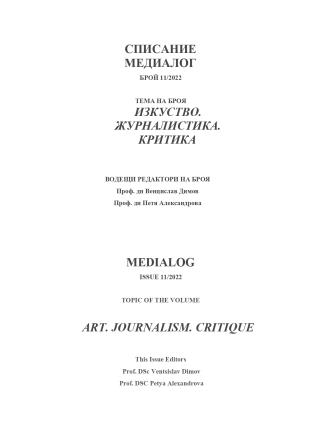
In the 50-ies and beginning of the 60-ies two great film critics and historians Paulo Emilio Salles Gomes and Alex Viany have a fundamental impact on the Brazilian Cinema novo and influence its flourishment and world recognition. With their erudition, knowledge of world cinema processes, huge critic’s activity and “militant cinephily” they educated and guided the young directors towards professional achievement and the search of national identity applying originally the lessons of the Italian neorealism and the French New wave. Their contribution to the revelation of the national film legacy, the new film movements, the foundation of a modern Film archive, the inauguration of the film education in Brazil and the oldest film festival in the country is undeniable.
More...
The text reviews the scientific monograph of Nurie Muratova ‚Women beyond the Archive. Invisible Histories of Women in Bulgaria‘, published by University Press ‚Neofit Rilsky‘ in Blagoevgrad. The book explores the place in the Bulgarian and world archives of two marginalized social groups – women and women with minority status. It is established that their visibility and invisibility, accessibility and secrecy, significance and underestimation depend on certain archival policies, social conditions, social stereotypes and prejudices.
More...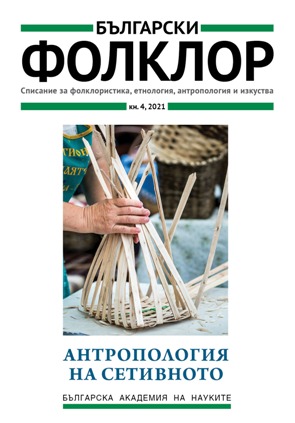
The article offers observations and preliminary notes from the study of cultural heritages with a focus on sensory images and their perception, expression, and communication. Sensory and visual anthropology are applied as research tools in the context of their complementarity and adequacy in regards with specific spheres of study. The author presents some results of her fieldwork in the form of visual archives and short anthropological films, which give further knowledge of the senses and their instrumentalisation for the generation of meanings and values.
More...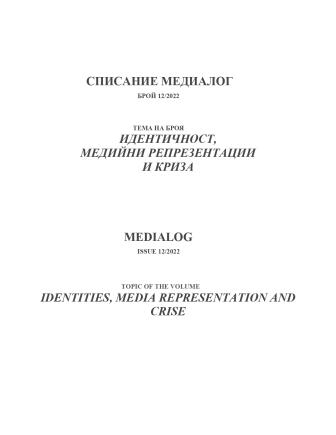
The article examines the National festival of folklore in Koprivshtitsa – a culmination of the assembly-singing movement – by looking for sustainable media representations of the folklore festivals, which has already been held for twelve editions (between 1965 and 2022). The mechanisms for organization and media coverage are sought in the chronological lines before and after 1989. The focus is on the discourses and presentation of the festival as a manifestation of collective and national identity, “the face of Bulgarianism”
More...
We publish a conversation of the journalist Irina Nedeva with Roumen Avramov, economist and historian, on the occasion of the Bulgarian translation of Nadège Ragaru’s book ‘Et les Juifs bulgares furent sauvés…’. Une histoire des savoirs sur la Shoah en Bulgarie’, Sciences Po. Les Presses, 2020) (“And the Bulgarian Jews were saved...” History of knowledge about the Holocaust in Bulgaria”). The conversation was broadcast on November 8, 2022 in the “Horizont do obed” ("Horizon by noon") program of the Bulgarian National Radio; the text published here is a transcription of it. The questions have been preserved, and in the answers Rumen Avramov has made some stylistic edits, as well as brief substantive additions and clarifications
More...
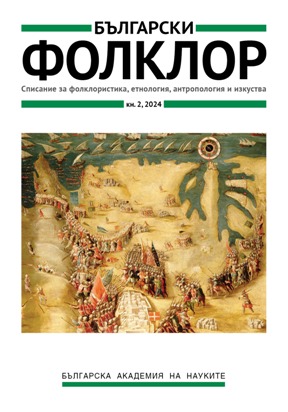
The text is dedicated to the opening of a new museum in the Town of Razlog.
More...